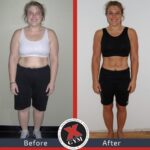The term “antioxidant” is a staple in health and wellness discussions, found in everything from supplements to skincare, fueling a global market worth approximately $70 billion. The popular narrative paints antioxidants as universally beneficial, protecting cells and promoting longevity. However, this oversimplified view masks the intricate science of antioxidants, oxidation, and their roles in human physiology. To understand their true impact, we must dive into the chemistry and biology behind these processes.
What Is Oxidation?
Oxidation is a chemical reaction akin to combustion, where a substance loses electrons to an oxidizing agent, often oxygen, releasing energy or transforming molecules. In daily life, oxidation appears as rust on iron or a browning apple. In the body, it’s a vital process. Mitochondria in our cells use oxygen to “burn” nutrients like glucose, producing adenosine triphosphate (ATP), the energy currency of cells. This controlled oxidation is essential, much like a car engine burning fuel to generate motion. Yet, under certain conditions, oxidation can harm cells, creating a duality that frames the role of antioxidants.
What Are Antioxidants?
Antioxidants are substances that slow or prevent oxidation by neutralizing reactive molecules that could damage cells. Think of water dousing a fire—it stops the oxidative reaction. In the body, antioxidants donate electrons to stabilize reactive molecules, preventing cellular harm. Common antioxidants include vitamins C and E, selenium, and plant compounds in fruits and vegetables. But are they always beneficial, as popular belief suggests?
The Free Radical Theory of Aging
In 1956, Denham Harman proposed the free radical theory of aging, suggesting that free radicals—molecules with unpaired electrons—damage cells, driving aging and disease. This theory gained traction, spurring the antioxidant industry’s growth. Harman highlighted hydroxyl radicals (OH*), highly reactive molecules with an oxidation-reduction potential (ORP) of 2800 mV at pH 0 and 2300 mV at pH 7. ORP measures a molecule’s ability to oxidize or reduce others, with higher values indicating stronger oxidizing power. For context, oxygen, essential for cellular respiration, has an ORP of 800–1280 mV, a range cells handle well.
ORP values vary with environmental factors like pH, temperature, and ionic strength. For instance, hydroxyl radicals’ ORP drops from 2800 mV at pH 0 to 2300 mV at pH 7. This variability underscores that a molecule’s oxidative power depends on its biological context, not just its inherent properties. Cells, like electronic devices, function optimally within a specific ORP range. Excessive ORP, as with hydroxyl radicals, can overwhelm defenses, damaging proteins, lipids, and DNA, contributing to aging, cancer, and other diseases.
However, not all free radicals are harmful. Their impact depends on their ORP and biological context. Free radicals like nitric oxide (NO) serve as signaling molecules in immune defense, cell growth, and stem cell activation. Labeling all free radicals as dangerous oversimplifies their role and fuels misconceptions about antioxidants.
Are Free Radicals Always Harmful?
A free radical’s harmfulness depends on its ORP, not just its radical nature. Highly reactive radicals like hydroxyl radicals (2300 mV at pH 7) can cause indiscriminate damage, while others with lower ORPs may be benign or beneficial. For example, chlorine dioxide (ClO₂), often called a strong oxidizer, has an ORP of 940–950 mV, within the cellularly tolerable range. Its ability to accept four electrons makes it a potent oxidizer, akin to a car battery: low voltage (12V) but high current, effective yet safe. ClO₂ targets pathogens with low ORP tolerances (as low as 90 mV) while sparing healthy cells adapted to higher ORPs.
Antioxidants and Fat Burning: A Complication
In addressing obesity, a major health issue driven by sedentary lifestyles and high-calorie diets, conventional advice emphasizes “burning fat” through exercise. This process, lipid peroxidation, involves oxidizing fats in the body. However, antioxidants may interfere by neutralizing the free radicals needed for this process, potentially reducing fat-burning efficiency. This highlights the complexity of oxidative processes in weight loss, where antioxidants might disrupt the body’s natural mechanisms (especially after a workout).
The Role of Antioxidants in Context
Antioxidants mitigate oxidative stress—an imbalance favoring oxidants over antioxidants—by donating electrons to reactive molecules, lowering their ORP. This is critical in scenarios like infections, excessive alcohol consumption, or chronic diseases, where hydroxyl radicals accumulate. For instance, alcohol metabolism generates hydroxyl radicals, contributing to hangovers. Antioxidant-rich foods like orange juice (high in vitamin C) help neutralize this damage.
However, antioxidants aren’t universally beneficial. Their effectiveness depends on the oxidative challenge and the body’s state. In metabolic acidosis, caused by diet, stress, or disease, hydroxyl radical production rises, increasing cellular damage. Antioxidants can help, but excessive or mistimed use may disrupt processes like lipid peroxidation or cellular signaling that rely on controlled oxidation.
Chlorine Dioxide: A Unique Case
Chlorine dioxide (ClO₂) illustrates the complexity of oxidative and reductive processes. Unlike traditional antioxidants, ClO₂ is an oxidizer with a dual role. Its 940–950 mV ORP allows it to selectively oxidize pathogens with low ORP tolerances (e.g., bacteria or viruses below 90 mV) while reducing hydroxyl radicals by accepting their excess electrons. After reacting, ClO₂ breaks down into harmless byproducts: table salt (NaCl) and oxygen (O₂). This dual action—oxidizing pathogens and reducing harmful radicals—positions ClO₂ as a promising therapeutic agent, especially in respect to illnesses, and in that case, vitamin C should not actually be taken at the same time because they will reduce each other’s effectiveness.
The Misunderstood Role of Vitamin C
Vitamin C, a celebrated antioxidant, exemplifies the complexity of these molecules. At high doses (e.g., 10-gram intravenous injections), it acts as a pro-oxidant, triggering the Fenton reaction. Here, ascorbic acid reacts with iron or copper to produce hydrogen peroxide (H₂O₂), an oxidant with an ORP of 1760 mV, which can dissociate into hydroxyl radicals (2300 mV). While this may target pathogens short-term, it risks excessive oxidative stress, damaging healthy cells. In contrast, dietary vitamin C needs are modest—about 200 mg daily (equivalent to two apples or a citrus serving)—sufficient to support antioxidant defenses without disrupting redox balance.
Vitamin C highlights the need for a balanced and thoughtful approach. While essential in small doses, excessive intake can shift it from an antioxidant to a pro-oxidant, with unintended consequences.
Reframing Antioxidants
The antioxidant narrative, rooted in Harman’s free radical theory and amplified by a $70 billion industry, oversimplifies a complex reality. Antioxidants aren’t inherently good or bad; their value hinges on the context—specific radicals, oxidative stress levels, and physiological state. While hydroxyl radicals can harm cells when their ORP exceeds cellular tolerances, not all free radicals are detrimental, and some are essential. Substances like chlorine dioxide challenge the antioxidant paradigm by balancing oxidation and reduction, selectively targeting pathogens while mitigating harmful radicals. Similarly, antioxidants may hinder processes like fat burning during exercise, underscoring their nuanced role.
The key takeaway is balance: our cells require a delicate interplay of oxidation and reduction to thrive. By moving beyond the simplistic “antioxidants good, free radicals bad” narrative, we can better appreciate the intricate chemistry that sustains life and make informed choices about our health. A deeper understanding of the body’s electrical properties will shape the future, laying the foundation for electromolecular medicine.
References:
- Grand View Research. (2023). Antioxidants Market Size, Share & Trends Analysis Report.
- Halliwell, B., & Gutteridge, J. M. C. (2015). Free Radicals in Biology and Medicine. Oxford University Press.
- Sies, H. (1997). Oxidative Stress: Oxidants and Antioxidants. Experimental Physiology, 82(2), 291–295.
- Harman, D. (1956). Aging: A Theory Based on Free Radical and Radiation Chemistry. Journal of Gerontology, 11(3), 298–300.
- Buettner, G. R. (1993). The Pecking Order of Free Radicals and Antioxidants: Lipid Peroxidation, α-Tocopherol, and Ascorbate. Archives of Biochemistry and Biophysics, 300(1), 535–543.
- Dröge, W. (2002). Free Radicals in the Physiological Control of Cell Function. Physiological Reviews, 82(1), 47–95.
- Ma, J. W., et al. (2017). Chlorine Dioxide: A Review of Its Antimicrobial Efficacy. Journal of Antimicrobial Chemotherapy, 72(1), 1–8.
- Ristow, M., et al. (2009). Antioxidants Prevent Health-Promoting Effects of Physical Exercise in Humans. Proceedings of the National Academy of Sciences, 106(21), 8665–8670.
- Frei, B., & Traber, M. G. (2001). The Role of Antioxidants in Preventing Oxidative Stress. Journal of Nutrition, 131(3), 733S–735S.
- Powers, S. K., & Jackson, M. J. (2008). Exercise-Induced Oxidative Stress: Cellular Mechanisms and Impact on Muscle Force Production. Physiological Reviews, 88(4), 1243–1276.
- Chen, Q., et al. (2007). Pharmacologic Ascorbic Acid Concentrations Selectively Kill Cancer Cells: Action as a Pro-Oxidant. Proceedings of the National Academy of Sciences, 104(21), 8749–8754.
- Levine, M., et al. (1999). Criteria and Recommendations for Vitamin C Intake. JAMA, 281(15), 1415–1423.









